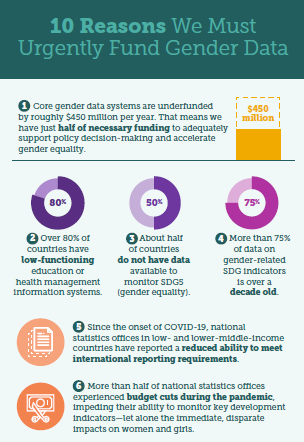 Over the last decade, gender data has increasingly been recognized as fundamental to achieving the Sustainable Development Goals. At the heart of that recognition is the acknowledgement that there can be no shared progress if we do not understand the lived experiences of women and girls in all their diversity—including their challenges and contributions.
Over the last decade, gender data has increasingly been recognized as fundamental to achieving the Sustainable Development Goals. At the heart of that recognition is the acknowledgement that there can be no shared progress if we do not understand the lived experiences of women and girls in all their diversity—including their challenges and contributions.
Gender data illuminates the path forward and can help ensure that the rights of all communities are upheld, protected and respected. At Data2X, that vision always been our guide star, and we are so proud of the catalytic partnerships and groundbreaking research that have allowed us to drive action to identify the most pernicious gender data gaps. None of it would have been possible without the support of our funders, The Bill & Melinda Gates Foundation and the William and Flora Hewlett Foundation, and our partners who have helped to create a movement around data-driven progress.
And so, as we embark on our 10th anniversary, it is with incredible hope for the future. Yet, we also remain clear where urgent action is still needed. Strong gender data systems are the bedrock of our future. But right now, they are underfunded by $450 million per year. That means we have just half of the funding needed to close gender data gaps.
The good news is that closing the financing gap is possible—but we can only do so together. That is why in our 10th anniversary year Data2X is calling on national governments, donors, multilaterals, companies, and civil society to take bold action to fill the gender data funding gap.
The bad news is we have no time to waste.
Here are 10 reasons we must urgently invest in gender data:
Each of us from our different sectors holds a piece of the gender data puzzle: national governments as duty bearers, private and bilateral donors with capacity-strengthening, companies with the granular and timely data needed for rapid response and civil society with the greatest proximity to the needs of the most vulnerable. We must use our collective strength to ensure that gender data systems are resilient enough to meet the needs of women and girls, now and in the future.
Let us act now to ensure that gender data systems are fully funded.
